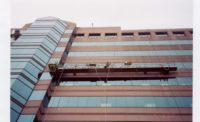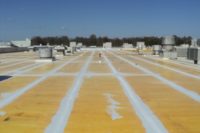Flooding is a huge topic in our industry these days. With the recent natural disasters that have taken place all over the country, it has forced us to relook and reevaluate waterproofing and leak prevention criteria. Throughout this issue, we’ve shared technical pieces that showcase the various floodproofing and moisture prevention happening in areas that aren’t just at risk for it.
The building enclosure is a complex integration of several building components and materials. Proper unification of these materials and
components is required to serve the primary purpose of the building enclosure, which is to protect the interior of the structure from the elements. Failures at any of these components and/or materials—individually or collectively—typically results in moisture infiltration into the structure.
If the water leaks manifest at higher elevations they are commonly believed to be from the roof. In certain cases this perception may prove accurate. The roof as a component is made up of several materials and leaks can occur at material joints, flashings and penetrations. However, not all leaks occur due to the roof.
Therefore, it is important to conduct a weatherproofing inspection of the exterior of the facility. During the course of this inspection, all exterior openings should be analyzed. This includes entry doors, windows and overhead doors. All joints in the building exterior finish should also be examined. These types of joints will be attached with mortar (masonry units) or sealant (concrete, pre-cast panels, EIFS systems).
The interior walls and ceilings should also be inspected for leaks and water stains. At these areas, identify stress cracks, openings and delamination of materials. In some cases, interior activities can contribute to exterior leaks.
Building Enclosure is a valuable resource in determining and correcting problems with the entire envelope. We focus on the technical elements of the enclosure—exterior and interior. BE provides analysis and discussion on design elements, materials and project case studies for the most important components of the building.




